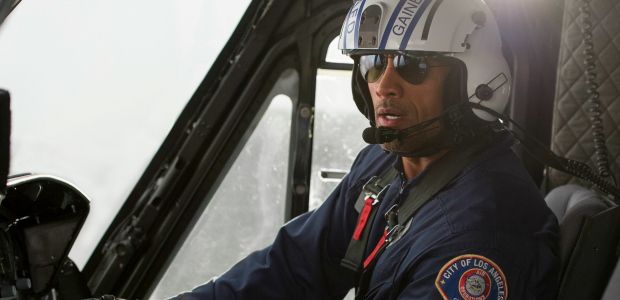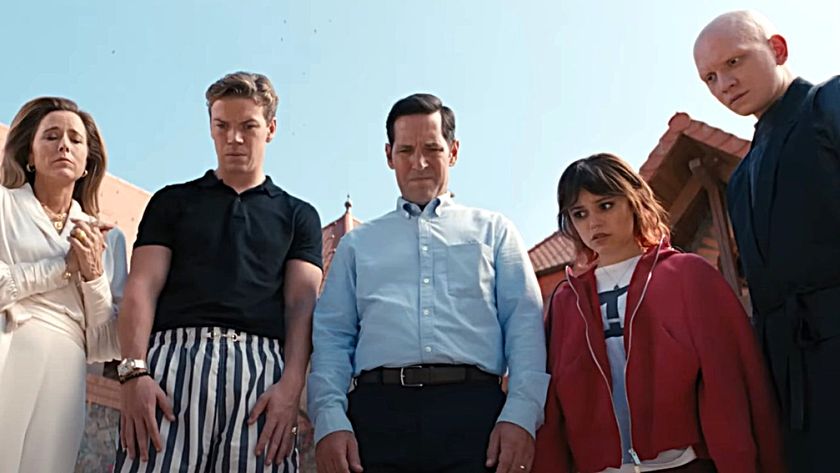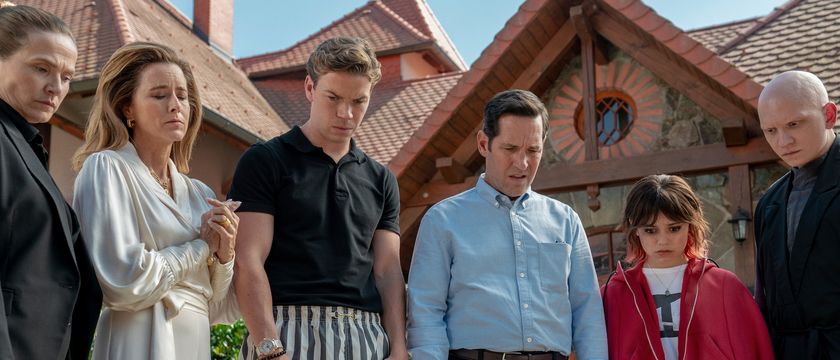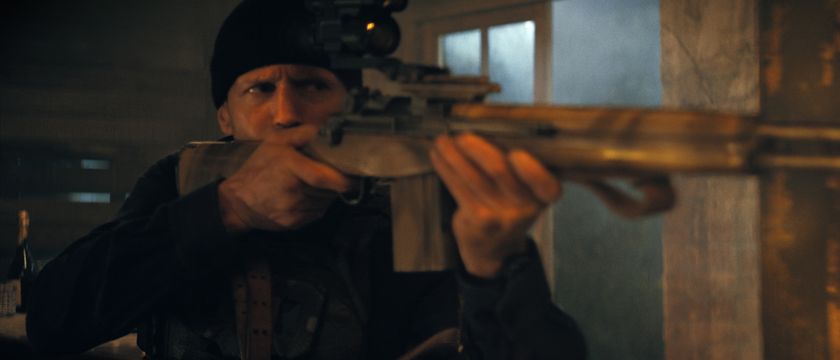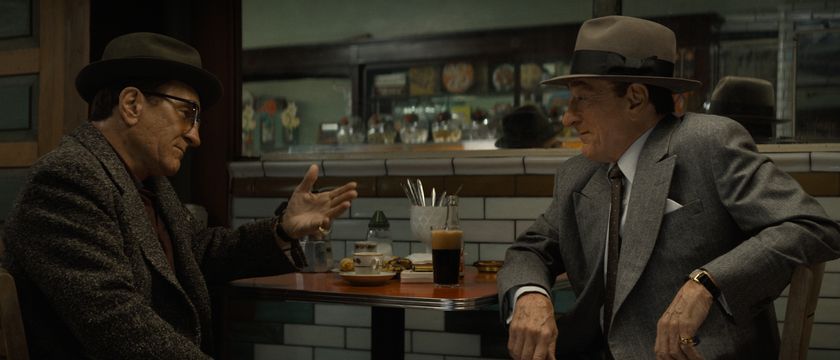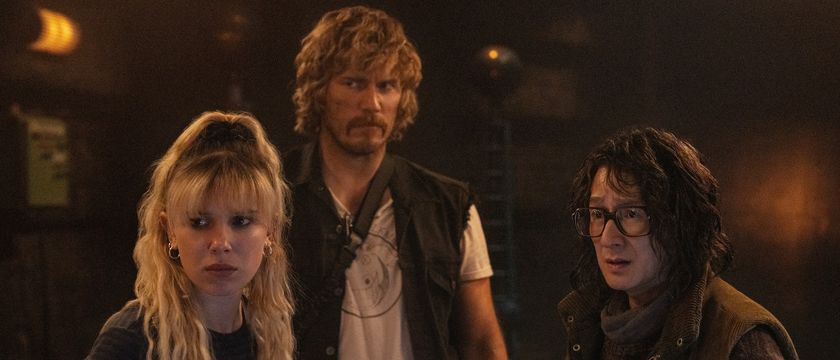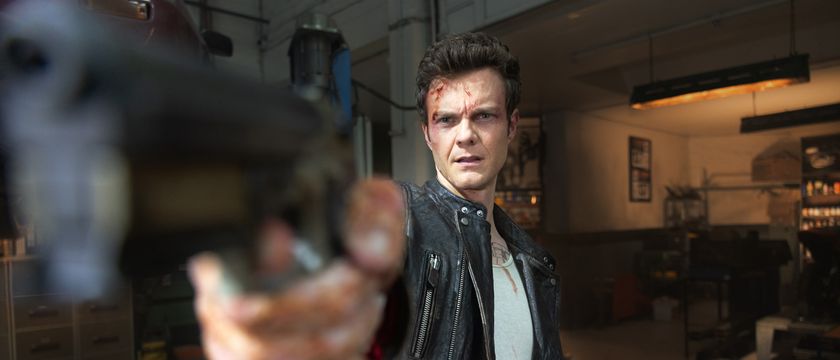Movie-goers love to watch costumed vigilantes and super spies save the day on the big screen, but if we’re looking for equitable true-life heroes, one doesn’t really need to look much further than first responders. These are people who dedicate their lives to helping people in need, often putting themselves in serious and direct danger to do so. These are individuals who actually deserve to have big screen stories told about their efforts… so it’s an even further shame that director Brad Peyton’s new film San Andreas features a protagonist who might be the most selfish first responder in cinematic history.
Given the feature’s categorization as part of the disaster movie genre, it’s true that most audiences won’t be seeking it out for its plot or character dynamics, instead simply hoping to see an earthquake nearly rip California off the western coast of America, but that doesn’t stop the feeling of something cold and wrong beneath the surface. There is some credit due to San Andreas for its portrayal of horrific geological events, which in turn create some legitimately suspenseful and clever moments, but it’s all driven by a narrative that’s so wrong that it poisons the entire film.
In the movie, Dwayne Johnson stars as Ray Gaines, an elite LAFD rescue-helicopter pilot who has a long career of daring rescues, with more than 600 people saved. Between his skills with a chopper and his incredible personal strength, he is the ideal hero to call into action when the biggest earthquake of all-time hits California, as his abilities and resources could be used to save another hundred people from perilous situations. Unfortunately, this is actually the furthest thing from Ray’s mind when the San Andreas Fault rips open, as instead of going around and saving individuals in need, he shirks all of his legitimate responsibilities and orders in the name of saving his ex-wife (Carla Gugino) and capable daughter (Alexandra Daddario) – the latter being up in San Francisco and really surviving just fine on her own.
The biggest embarrassment behind this major narrative issue in San Andreas is that it could have been fixed with one stray line of dialogue about Ray being forced to take some time off the job or being put in a position where he legitimately can’t help the rescue effort, but because the movie never bothers, it makes the whole film feel base level-manipulative and makes Ray look like an asshole. The presumed motivation for the plot is that most audience members can relate to a hero doing everything they can to save the people they love, trying to juice an emotional connection between movie-goers and the family man protagonist’s efforts - but that all goes out the window thanks to Ray’s profession. Watching the movie, one can’t help but imagine all of the people who are horrifically dying on the ground under piles of destroyed building as an entirely self-interest-driven pilot flies his helicopter overhead ignoring their desperate cries for help. It says something that even the effortless charm and likability of Dwayne Johnson can’t redeem the character.
Aesthetically, San Andreas in many ways feels like a kind of ‘90s throwback and the early age of Roland Emmerich/Michael Bay disaster films, and with legitimately great CGI work, the movie does deserve some credit for its entertainment value. From a rescue mission on the side of a cliff at the start of the movie, to a one-shot sequence where Carla Gugino tries to escape from a crumbling skyscraper, the blockbuster actually has some pretty fantastic set pieces, and even in parts shows some brains – such as a scene where two acquaintances of Alexandra Daddario’s character (Hugo Johnstone-Burt, Art Parkinson) try to get her out of a crushed car. The destruction, which is what some movie-goers are solely paying to see, looks shocking and realistic, and though variety in magnitudes are hard to reed, Brad Peyton and screenwriter Carlton Cuse to mix it up a bit with tsunamis and other horrible side effects.
San Andreas is one of those fundamentally broken movies that makes you wonder how it could go through so many levels of development without someone pointing out the most critical and devastating problem that cripples every aspect of it. Because nobody thought to bring it up, the finished product is a less-than-basic disaster film with no emotional weight.

Eric Eisenberg is the Assistant Managing Editor at CinemaBlend. After graduating Boston University and earning a bachelor’s degree in journalism, he took a part-time job as a staff writer for CinemaBlend, and after six months was offered the opportunity to move to Los Angeles and take on a newly created West Coast Editor position. Over a decade later, he's continuing to advance his interests and expertise. In addition to conducting filmmaker interviews and contributing to the news and feature content of the site, Eric also oversees the Movie Reviews section, writes the the weekend box office report (published Sundays), and is the site's resident Stephen King expert. He has two King-related columns.
